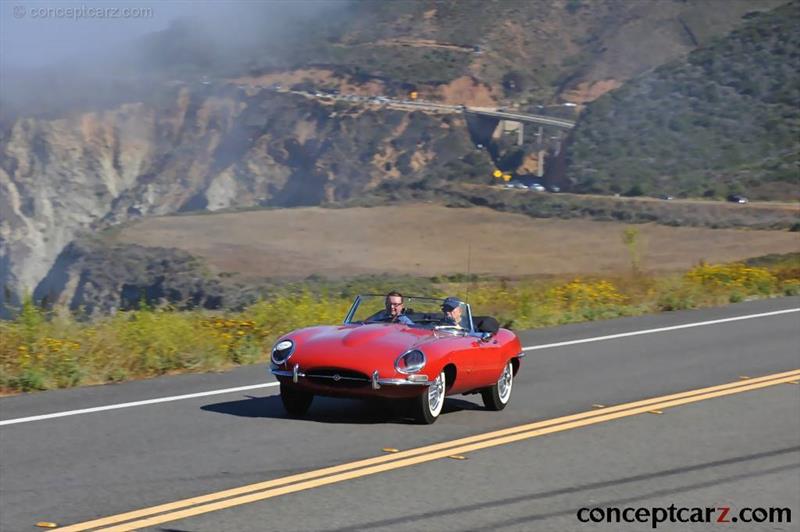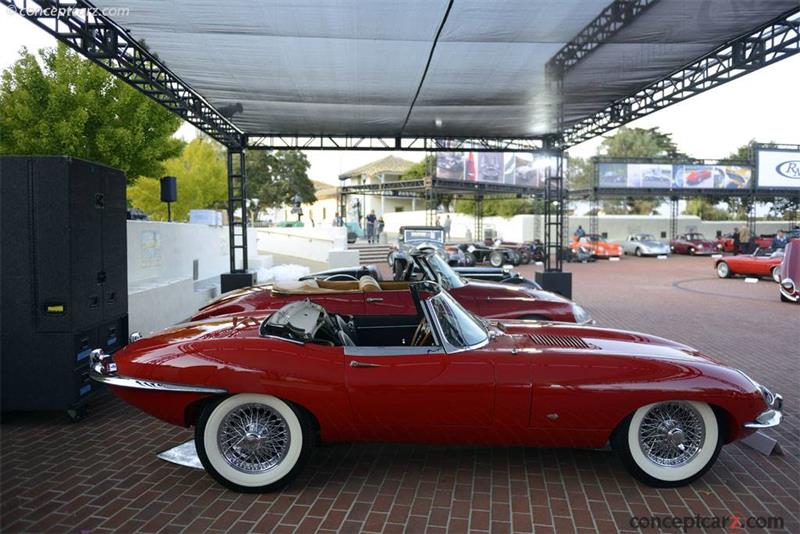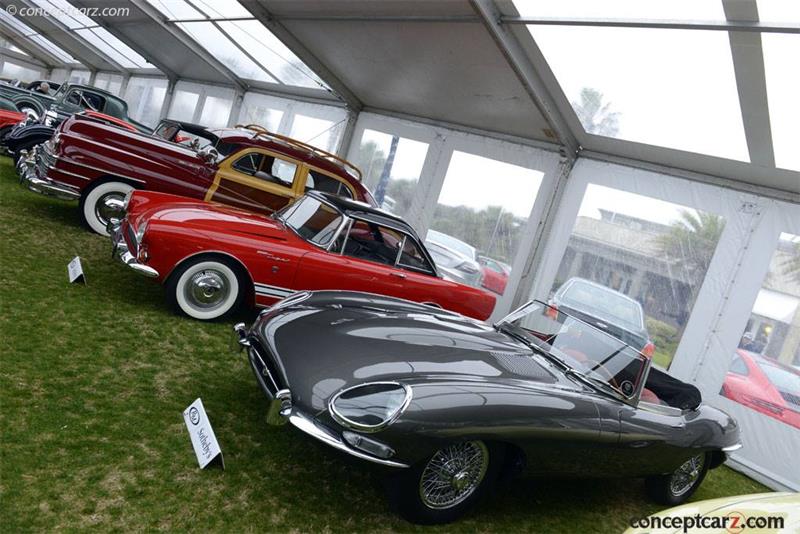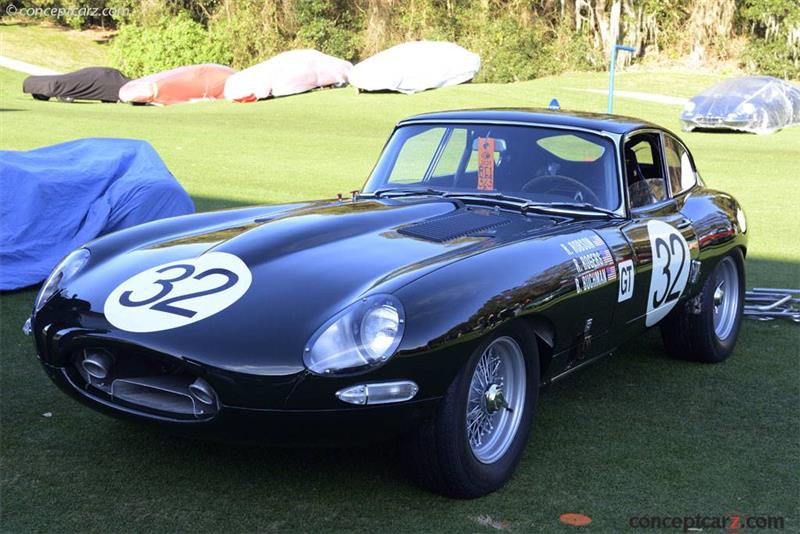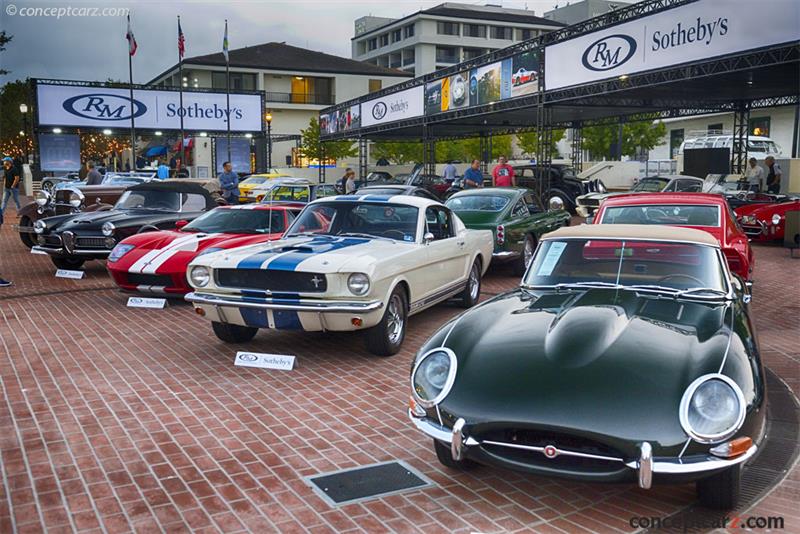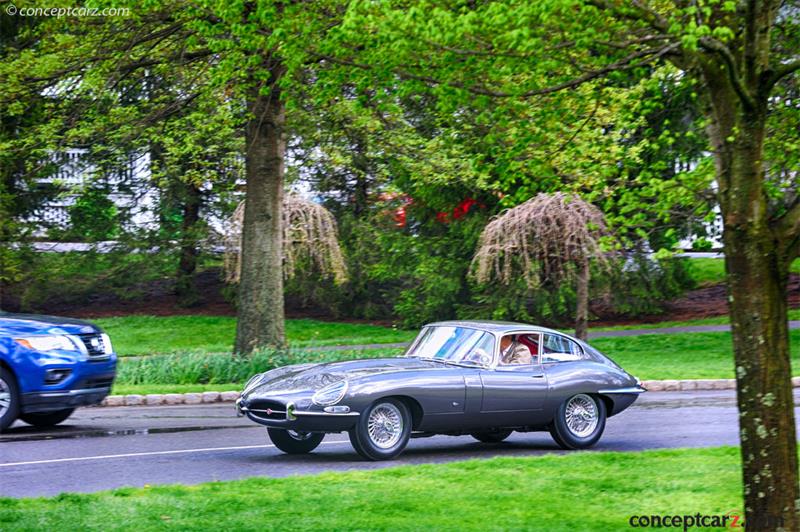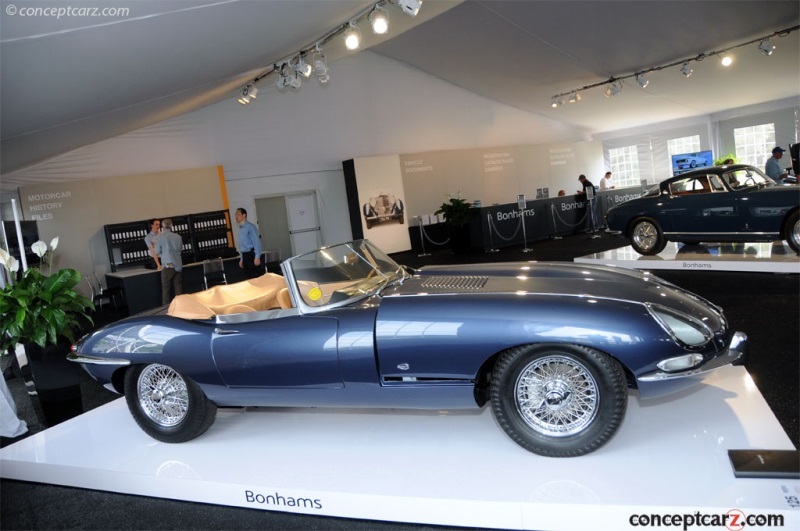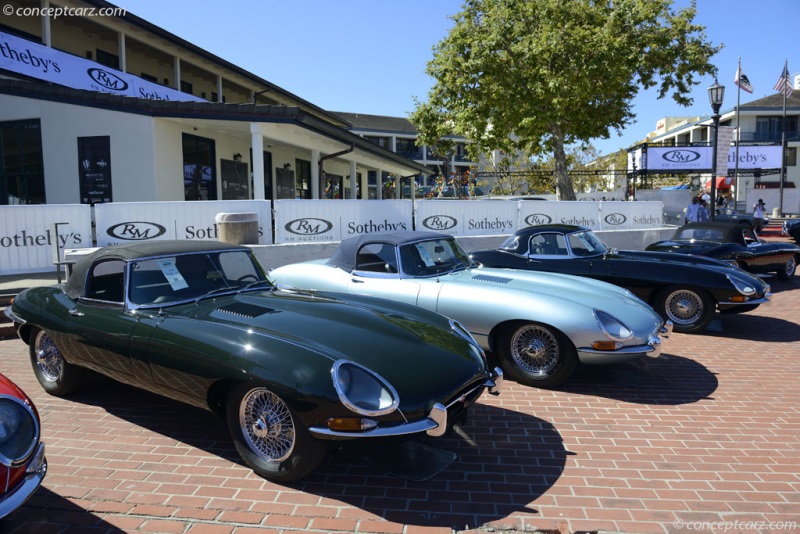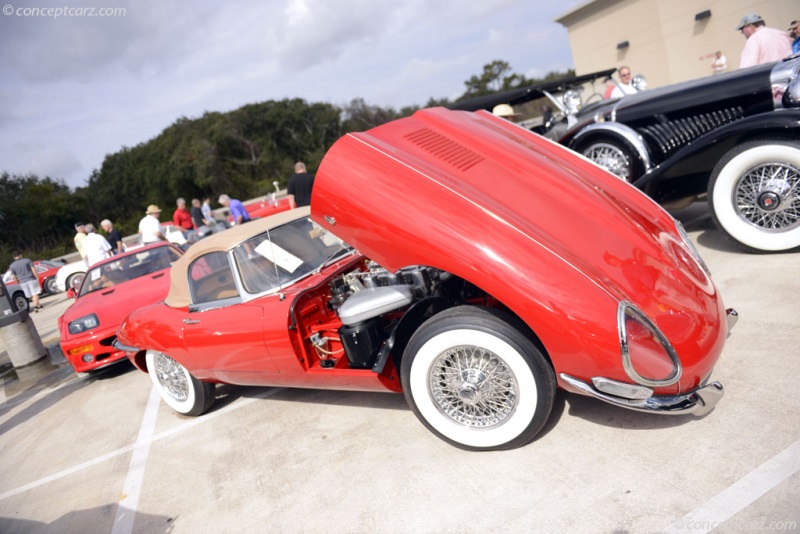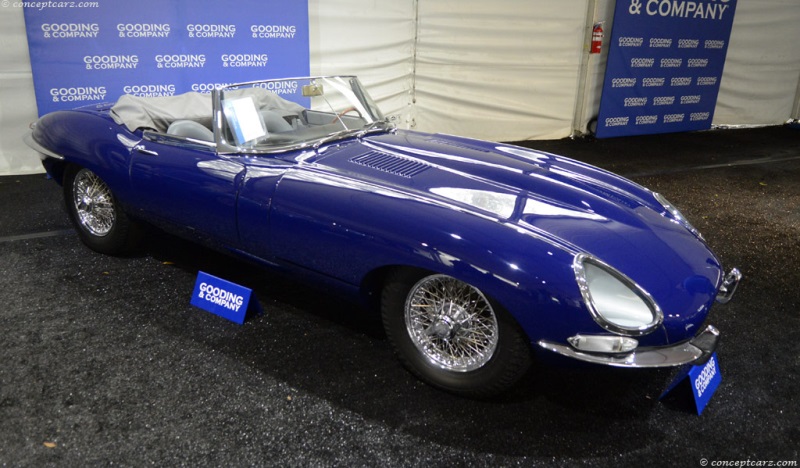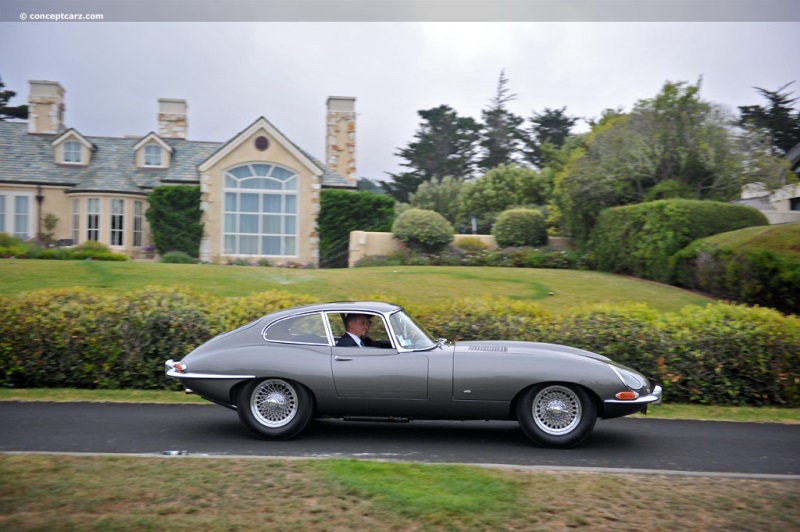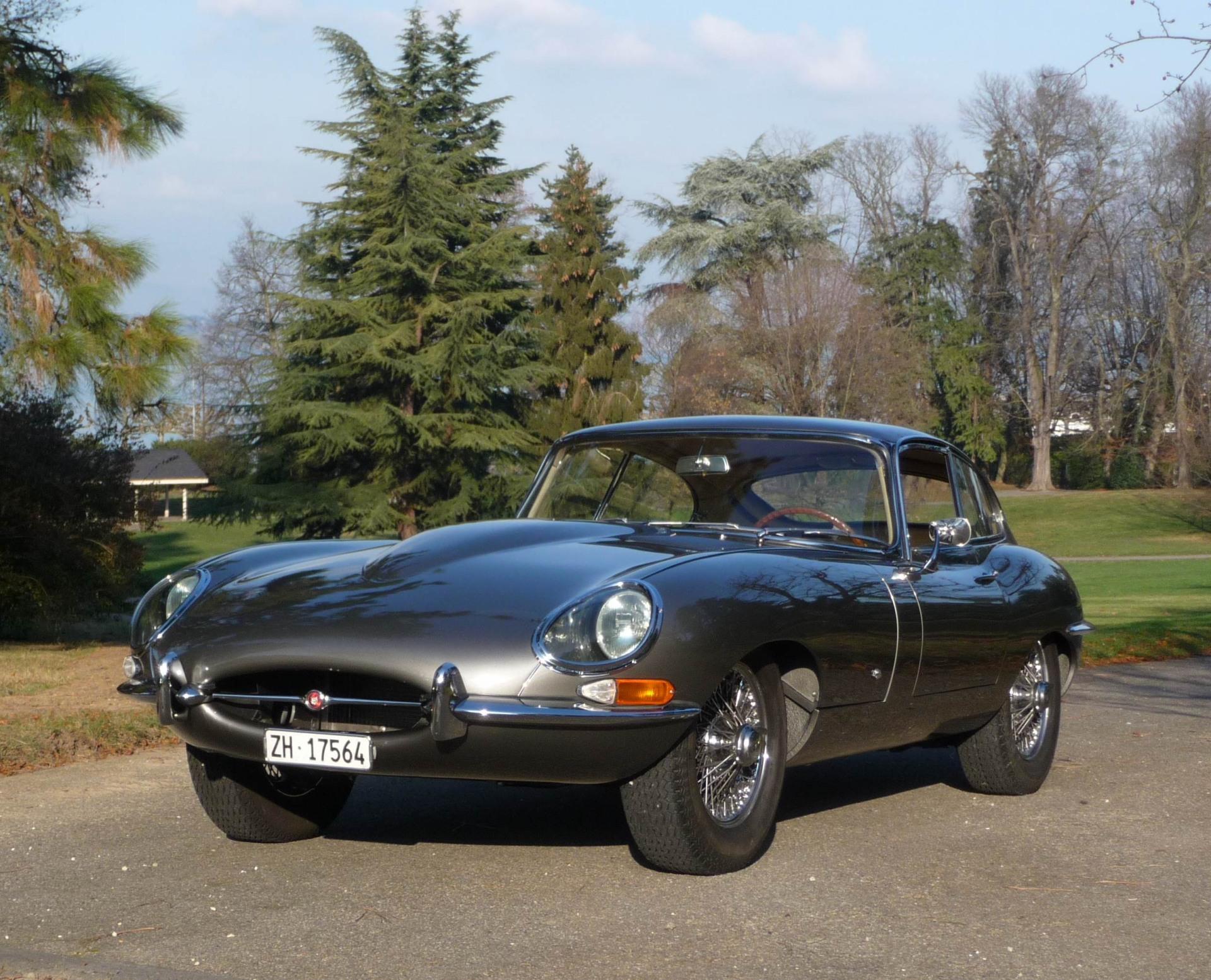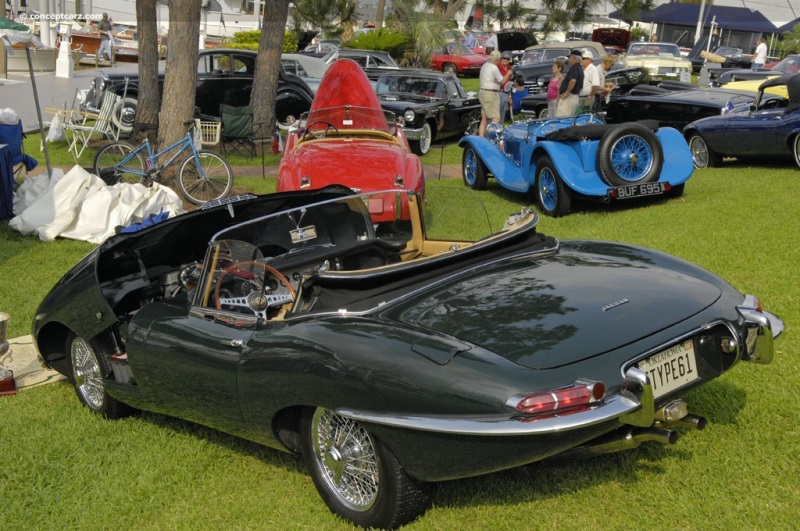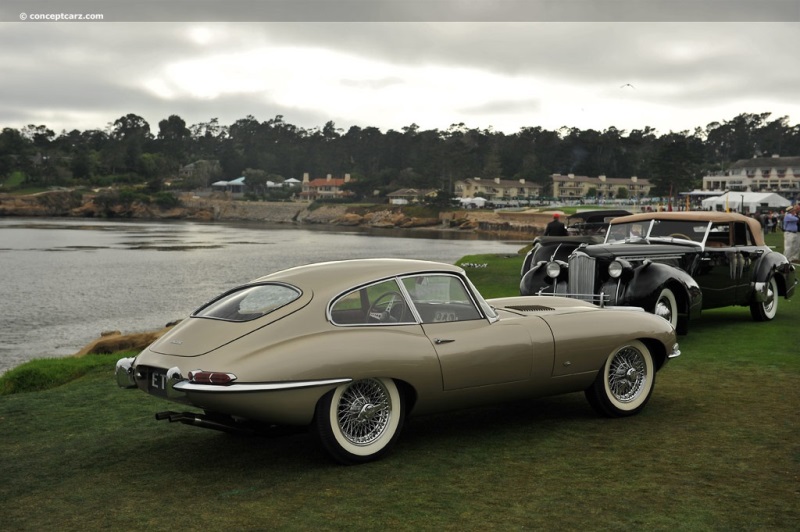Sir William Lyon's advertisement describing their new sports model, the E-Type, was as such: 'You don't have to be a competition driver to drive a Jaguar. You don't have to be a celebrity. You don't have to be rich, but just slide behind that racing wheel, ease back into the butter-soft, glove-leather seat, turn the key, reach down and slip into first, hear that unmistakable Jaguar roar and you'll be the fastest, most famous, richest man in the world.'
RoadsterThe E-Type was a civilized road-going version of Jaguar's LeMans-dominating D-Type and was capable of 150 mph straight out of the showroom. Introduced in the 3.8-liter form in 1961, the Jaguar E-Type (XKE in the USA) has a double-wishbone, independent front suspension mounted on the forward sub-frame that supported the engine. In the back, the suspension broke new ground for a large-capacity sports car, being independent when most of its major rivals relied on the traditional live rear axle. In a similar fashion to the D-Type, the monocoque tub formed the main body/chassis structure while a tubular spaceframe extended forwards to support the engine.Dunlop disc brakes were placed on all four wheels, with the ones at the rear being mounted inboard alongside the differential to reduce un-sprung weight. The same 3.8-liter, triple-carburetor, 'S' unit first offered as an option on the preceding XK150, was installed in the E-Type. The engine produced 265 horsepower and because the E-Type weighed 500 lbs less than the XK150, and with the knowledge gained by aerodynamicist Malcolm Sayer on the D-Type, the E-Type offered exceptional performance. The only area where the new E-Type did not represent an improvement over the XK150 was the durable four-speed Moss gearbox, which it retained.The E-Type design was influenced by the C- and D-Types, but it was not designed in a wind tunnel. Instead, Sayer sculpted it from talent, instinct, and mathematical formulae. 
Coupe
Chassis #: 885004
View info and historyDuring the development process, Lyons authorized a coupe version, which was later selected to be the debut car at the Geneva Motor Show in March 1961. (chassis 885001 – 885007 were all either development vehicles or press cars for display at the Geneva and New York Motor Shows.) At Geneva, an Opalescent Silver Grey Jaguar Coupe resided under a large wooden crate that was revealed when the crate ceremoniously folded away. The successor to the XK150 was met with raucous applause and urgent demand. The coupe was joined by a British Racing Green open Roadster the following morning, with both coupe and roadster having been faultlessly designed by Malcolm Sayer. There was no indication that both cars had been hurriedly assembled less than two months prior, and that the latter had just completed a dramatic 17-hour journey from Coventry to Geneva with just enough time to be cleaned before giving demonstrations to the motoring press. Due to the accelerated schedule, the pre-production coupes were handmade from roadster bodies. In the months following Geneva, Jaguar completed the tooling or the coupe's body panels while the production of the roadster was already in full swing. As the name suggests, the E-Type was initially planned to be an evolution of the Le Mans-winning D-Type sports racer. Those ambitions were scrapped in 1956 as Jaguar's focus on building road-going sports cars increased, along with the termination of its works racing program in the same year. A single 'E Prototype' had been built, and although it was later dismantled, its D-Type-derived chassis and 'E' suffix would find new life as the E-Type, thanks in part to Chief Engineer Bill Heynes, who recognized the potential of road-going versions. By early 1961, four pre-production E-Types (two Open Top Roadsters and two Fixed Head Coupes (FHC)) were complete, with chassis 850003, 885002 and 885005 due to appear in Geneva for the unveiling.The popularity of the E-Type caught the small team at Browns Lane off guard, and by August of 1961, eleven Coupes and 372 Roadsters had been hand-assembled. Distinguishable features of these early bespoke vehicles were the flat floor, outside bonnet latches, and welded bonnet louvers. 
Coupe
Chassis #: 885004
View info and historyThe early E-Types were criticized for not having adequate interior space for taller drivers, which was resolved in February of 1962 with the introduction of a footwell, along with other minor modifications. Cars produced prior to February of 1962 are known as 'flat floor' 3.8-liter cars with welded-louver and outside latches. Of the first 500 Jaguars produced with outside bonnet latches in 1961, 385 were left-hand-drive roadsters, and 20 were fixed-head coupes. An additional four coupes were built with right-hand-drive configuration. Of the twenty LHD examples, only 18 left the factory as one was destroyed by the factory and number 7 burned while still there. Currently, there are 12 known surviving left-hand-drive cars from this group. The E-Type was immensely popular, and the small Jaguar factory was behind on orders for the next four years, which meant there was little reason to make major changes to the design until 1965.1961 Jaguar E-Type (XKE) Series 1 3.8
In the United States, the 1961 XK-E (E-Type) roadster was priced at $5,600, and the coupe at $5,900. It had a 96-inch wheelbase with an overall length of 175.3 inches, stood 48 inches tall, and was 65.25 inches wide. The front suspension was comprised of wishbones, anti-roll bars, and torsion bars, while the rear relied on an independent setup with lower wishbones, coil springs, and anti-roll bars. Disc brakes at all four corners provided the stopping power. Beneath the long and graceful bonnet was an inline six-cylinder engine with dual overhead camshafts, solid valve lifters, two SU side-draft carburetors, seven main bearings, and delivered 265 horsepower at 5,500 RPM and 260 lb-ft of torque at 4,000 RPM. The transmission was a four-speed manual with optional overdrive. Painted wire wheels were standard and chrome versions were optional.
by Daniel Vaughan | Feb 2020
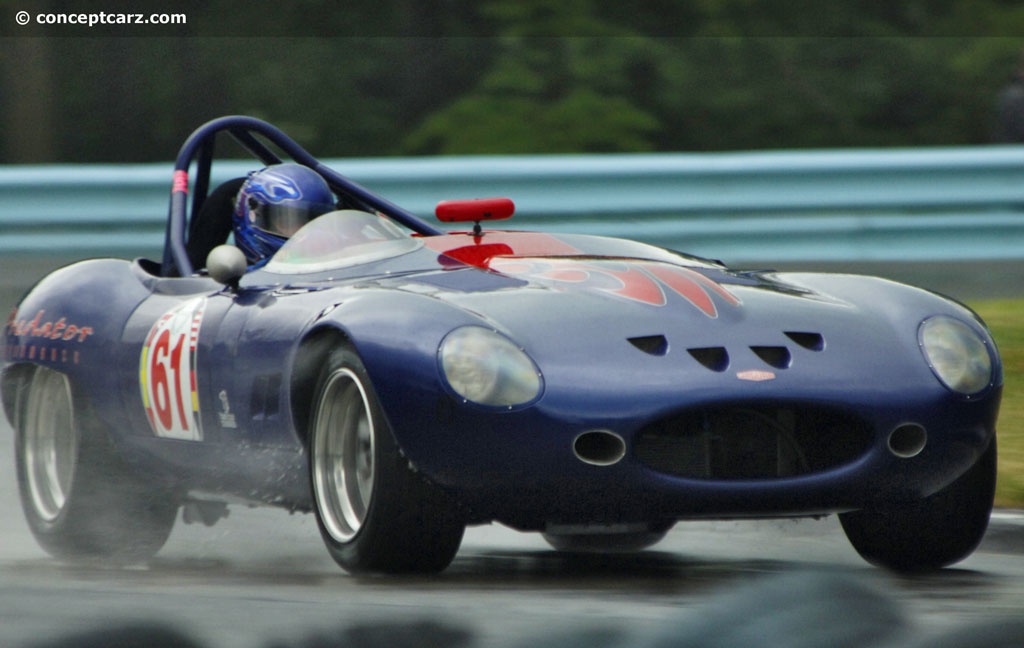
Roadster
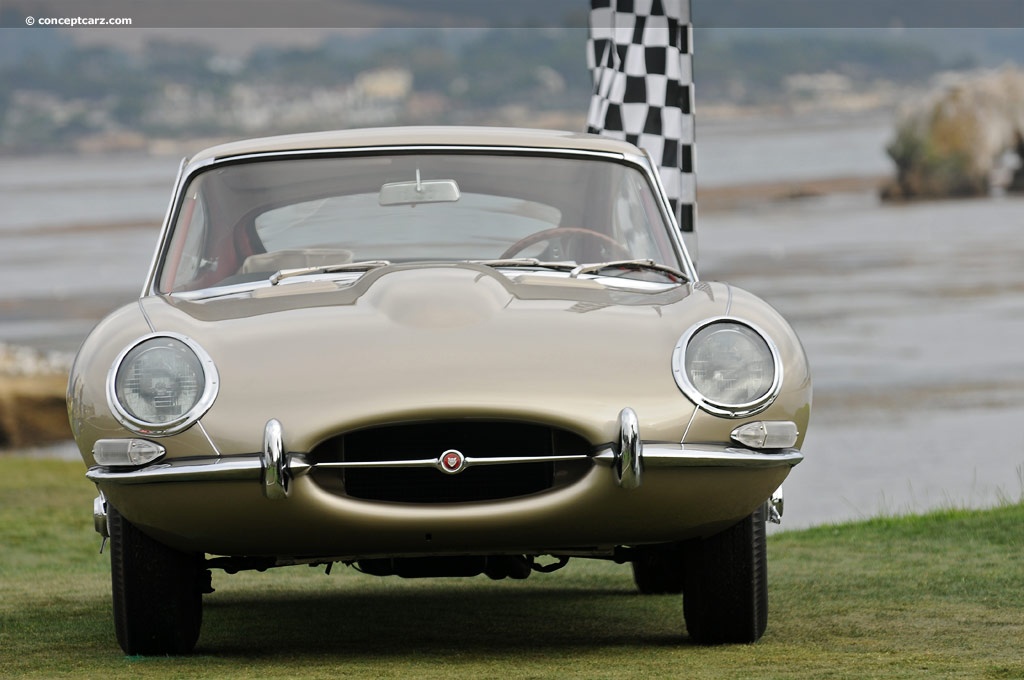
Coupe
Chassis #: 885004
View info and history
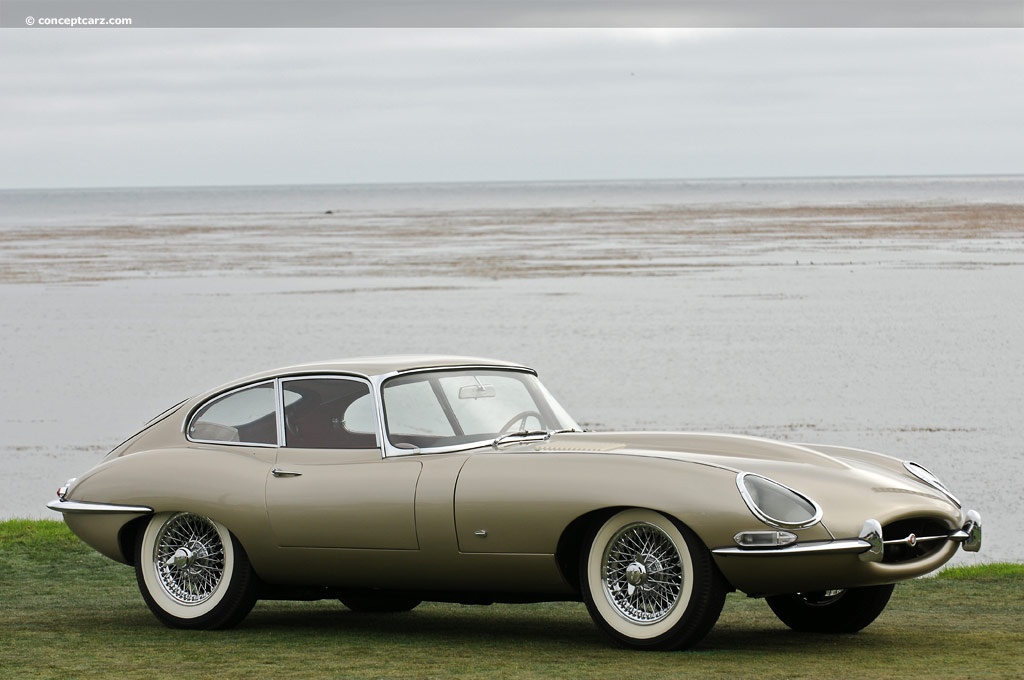
Coupe
Chassis #: 885004
View info and history
In the United States, the 1961 XK-E (E-Type) roadster was priced at $5,600, and the coupe at $5,900. It had a 96-inch wheelbase with an overall length of 175.3 inches, stood 48 inches tall, and was 65.25 inches wide. The front suspension was comprised of wishbones, anti-roll bars, and torsion bars, while the rear relied on an independent setup with lower wishbones, coil springs, and anti-roll bars. Disc brakes at all four corners provided the stopping power. Beneath the long and graceful bonnet was an inline six-cylinder engine with dual overhead camshafts, solid valve lifters, two SU side-draft carburetors, seven main bearings, and delivered 265 horsepower at 5,500 RPM and 260 lb-ft of torque at 4,000 RPM. The transmission was a four-speed manual with optional overdrive. Painted wire wheels were standard and chrome versions were optional.
by Daniel Vaughan | Feb 2020
Related Reading : Jaguar E-Series History
The Jaguar E type, also known as the XK-E, brought style and performance together to create a mass-produced supercar. The road-going sports car was conceived in 1956 as a replacement for the D-type. In March of 1961, the E-Type was officially introduced to the world at the Geneva, Switzerland Motor show. Its design was created by an aerodynamic engineer named Malcolm Sayer. The front-engine,....
Continue Reading >>
Continue Reading >>
Similar Vehicles
Similar Automakers
Similarly Sized Vehicles
from 1961
Similarly Priced Vehicles
1961 Jaguar E-Type Series 1 Vehicle Profiles
Recent Vehicle Additions
Performance and Specification Comparison
Price Comparison
$4,640 - $5,160
$4,910
$6,080
E-Type S1 Specification Comparison by Year
Year
Production
Wheelbase
Engine
Prices
Related Automotive News

Jaguar E-type Chosen As Best British Car Ever In Global Poll
E-type chosen as Best British Car Ever in worldwide voting poll
Accolade revealed at inaugural Classic %26 Sportscar - The London Show
See the oldest surviving open-top E-type - 77 RW - on display at the show at Alexandra Palace
Legendary Jaguar te...

From pioneers to performance greats: Salon Privé unveils stellar entry for Concours d'Elégance
More than 100 years of motoring history on show at Blenheim Palace
Awards will be decided by ICJAG panel of world-leading experts and chief automotive designers
Coachbuilt beauties entered, along with competition legends on two wheels and four
Cl...

London Concours announces cars on display in 2021
Once again, the prestigious event assembles the finest collection of cars ever, in the heart of the City of London
London Concours 2021 reveals the full list of nearly 100 spectacular historic and performance cars at Londons HAC from the 8-1...

Jaguar Classic Will Celebrate 60 Years Of E-Type In 2021 With Anniversary Tribute Edition
In March 2021 Jaguar will celebrate the 60th anniversary of the iconic E-type
Jaguar Classic is creating six limited-edition matched pairs of restored 3.8 E-type models
E-type 60 Edition specification includes commemorative detailing and exclusive...

Four Pininfarina Masterpieces Offered at Gooding & Company's 2019 Pebble Beach Auctions
Highlights include the Italian Prince Ruspolis spectacular Ferrari 250 GT Series I Cabriolet, the one-of-a-kind Alfa Romeo 6C 3000 CM Superflow show car, a wonderfully original Ferrari 400 Superamerica Series I Coupe Aerodinamico, and an ultra-rare...

Amelia Island Concours d'Elegance Celebrates The Immortal Jaguar XKE At 60
Sixty years ago a legend was born in secrecy. The first Jaguar XKE prototype, a roadster, was assigned an official chassis number 850001.
On March 11, 2018 the 23rd annual Amelia Island Concours dElegance will celebrate and honor the British...





































